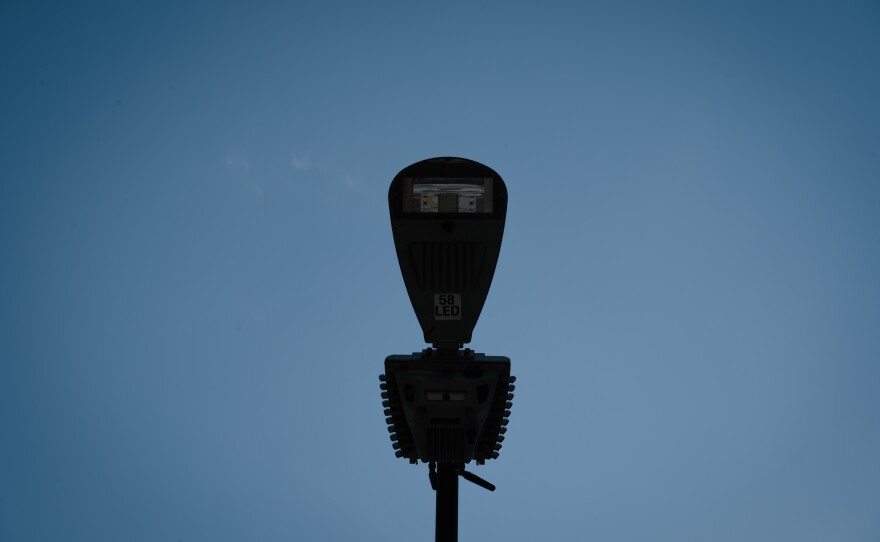Mayor Todd Gloria and San Diego Police Chief Scott Wahl Monday highlighted the effectiveness of the city's Smart Streetlight and Automated License Plate Reader technology ahead of plans to move some of the cameras.
According to the city leaders, the tools have contributed to 229 criminal cases in 2024, resulting in 166 arrests.
"The results speak for themselves," Gloria said. "Smart Streetlights and ALPR (Automated License Plate Reader) technology have proven to be essential tools for our police officers, helping to quickly identify suspects and solve crimes. My number one responsibility as mayor is to keep San Diegans safe — these tools are helping us do that."
The San Diego City Council approved the use of the technology, but opposition from privacy advocates temporarily halted the program.
In December 2023, the council moved forward with the program with stricter privacy measures in place — namely the Transparent and Responsible Use of Surveillance Technology ordinance, intended to ensure transparency around how technology is used, what data is collected and what it is used for.
"In less than a year since being installed, the Smart Streetlights and ALPR readers have already proven their effectiveness," Wahl said. "This technology is critical to our ability to investigate crimes throughout our city. SDPD remains committed to using tools like these responsibly to hold criminals accountable and provide the highest level of public safety to our residents."
Effectiveness aside, the more than 500 Smart Streetlights have long received backlash from privacy advocates, sparking debate after what was initially billed as a traffic management tool was later publicly revealed to involve camera technology utilized by police.
Advocates also referred to a lack of transparency from the city, and Gloria's administration subsequently blamed the city's surveillance ordinance passed in 2022 as slowing the process to get technologies deployed.
When the council voted last year, City Council President Sean Elo- Rivera said he was frustrated at how the conversation on the smart streetlights and license plate readers was being presented — as a false choice between wanting safety or valuing civil liberties.
Elo-Rivera said he didn't trust a process that sidestepped recommendations from various appointed technology and privacy boards.
Still, proponents of the paired technologies say many of those problems when originally rolled out have been improved upon or solved.
"Our neighborhoods should be safe for everyone to live, work and play," said City Councilwoman Marni von Wilpert. "Technology like Smart Streetlights has shown to play a critical role in protecting our communities, helping police do their work more efficiently, while also protecting the privacy rights of our residents."
Monday's news conference came as the SDPD prepares to ask the City Council to expand the placement of around 40 of the cameras from a fixed location to a "two-block zone to ensure flexibility when infrastructure issues arise." The zones expand two blocks in each cardinal direction from the proposed placement.
According to SDPD, the flexibility is needed as when the cameras began to be installed, obvious problems arose — such as poles with insufficient voltage or objects blocking the camera's view.
The zones proposed include in high-traffic areas such as Pacific Beach, Mission Beach and Mission Valley, but also in areas with high proportions of minorities, such as Convoy, San Ysidro, City Heights, Logan Heights and Southeast San Diego.
According to the police, cameras will still not be allowed to monitor immigration buildings, reproductive centers such as Planned Parenthood, or places of worship, in accordance with the TRUST ordinance signed into law last year.
The initial cost for the devices in Fiscal Year 2024 was around $3.5 million and included a one-time $1.5 million installation and maintenance cost and $2 million for hardware, software and connectivity. The program will then cost around $2 million annually.









